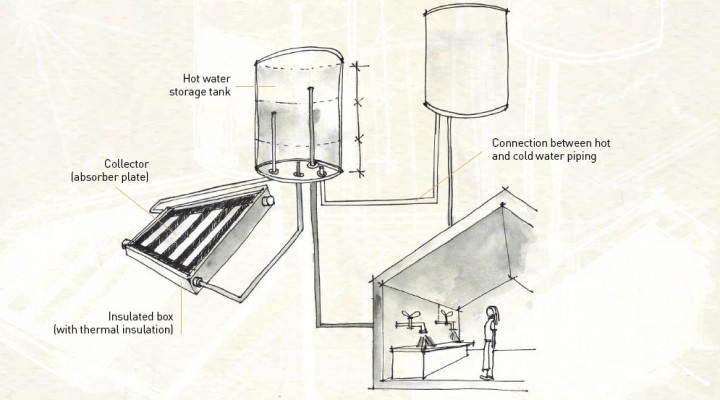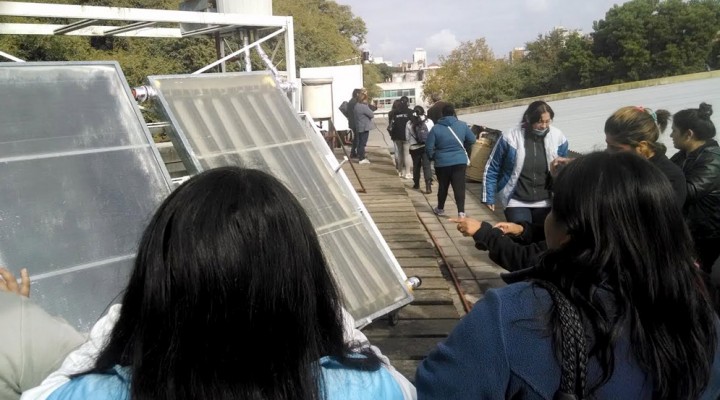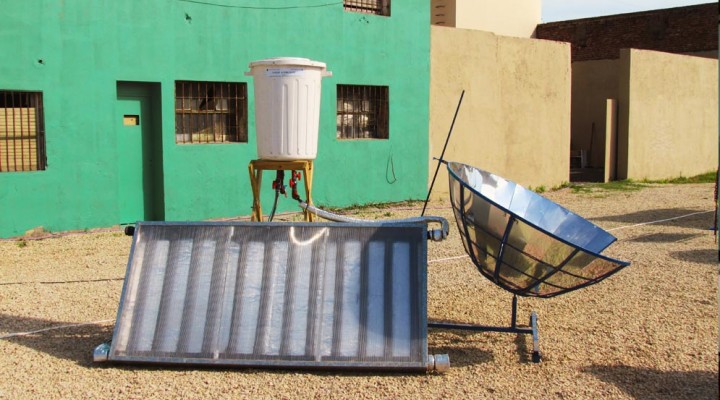Agrarian, Engineering and Materials Sciences
Homemade solar water heaters
They can be constructed in one morning and cost a third of a traditional water heater. The aim is to deal with the problem of hot water in deprived areas. So far, more than 1.500 water heaters have been made and distributed.
After the 2001 crisis in Argentina, a group of researchers led by Gustavo San Juan, CONICET associate researcher, director of the Institute for Research and Policies of Built Environment (IIPAC, UNLP) and the Laboratory of Models and Environment Design (LAMbDA-λ), decided to develop basic devices for the most vulnerable sectors of the population.
“In 2003, after the creation of LAMbDA-λ, Elías Rosenfeld and I decided to work on the research and development of the components and solar systems for social sectors on low income”, the researcher comments.
They designed a solar water heater that can be constructed with traditional materials, easy to find in any hardware store. It can be constructed in one morning with the instructions that appear in the easy technology manual developed by the research team. The device heats up to 80 litres a day and costs a third of the value of a commercial water heater that works with gas. Although the solar water heaters are not as efficient as the commercial ones, they are an economical alternative to provide a family with hot water.
“They are low-cost and basic technology solar heaters; and that is the key point: anyone can produce them and it is not necessary to spend 12.000 or 15.000 pesos, which is the price of a water heater in the market”, the researcher states. These solar collectors can provide a family of four or five with hot water to be used for personal hygiene, laundry, and house cleaning, but not for human consumption.
In 1977, when the work group was created, they decided to focus their research on applications of solar energy, not only because of its environmental benefits but also to help improve the quality of life of the people.
“So far we have produced more than 1.500 water heaters in different parts of the country, especially in the suburbs of the city of La Plata, Buenos Aires. We did everything jointly with the people; we use traditional materials and there is no need to weld or perform special procedures. Over time we realized that it was necessary to transmit that knowledge so we developed very simple instruction manuals. We provide people with training in the morning and we construct the collector in the afternoon”, the researcher adds.
As it is a very simple process that can be learnt in one morning, people can repeat it and build the number of collectors they need for them and their relatives.
Future enterprises
Although water heaters can be constructed with elements that are available in any hardware store, the scientists are working on the development of matrixes for mass production so as to lower the costs even more.
Currently, commercial polyethylene pieces are used, but “in the future, producing our own matrixes and pieces will industrialize, in part, the system. Since we work with several cooperatives, this is a possibility of starting some type of small enterprises”, San Juan comments.

The solar absorber is made up of black polyethylene pieces and tubes, whereas for the storage tanks are made from recycled materials, sometimes donated by private companies or collected from different places. But the design of their own pieces will allow researchers to optimize components and inserts, such as pipes or shunts, in the same tank.
This means that with the new pieces the need to pierce, stick or screw will be reduced, and it will take less steps and processes to construct it. “If there are less component and are produced in series, it is going to be cheaper and easier to construct the heater, while improving the thermal efficiency of the system”, the scientist adds.
Another factor to take into consideration is the area where the water heater is going to be used. The operation is different according to the weather and solar exposition, among other environmental variables.
“Our development is standardized for temperate climates with average solar radiation that match up with the central area of Argentina. We have constructed some solar water heaters in the province of Salta and, despite being socially accepted, there is so much solar radiation that some pieces failed. The water was very hot but it was necessary to shade it – for instance with a type of shade cloth- so as not to heat the pieces, which collapse due to temperature. These are low-efficiency systems: for instance, in Ushuaia they are not going to heat much [due to low-level solar exposure] and in areas such as Salta, some materials can fail due to maximum radiation. However, in temperate areas it works very well”, the researcher concludes.
Work team:
– Gustavo San Juan. Associate researcher. IIPAC.
– Carlos Discoli. Independent researcher. IIPAC.
– Graciela Viegas. Assistant researcher. IIPAC.
– Victoria Barros. Researcher and extensionist. UNLP.
By Ana Belluscio.
Versioning: Cintia B. González.


